Pilots
Circular TwAIn promotes circularity and end-to-end sustainability through trusted AI technologies in three industrial pilots both in the discrete manufacturing and the process industry.
De- and Re-manufacturing of Li-Ion battery packs in e-mobility
Automotive battery systems are complex components, and their circular value chain is peculiar: they share only the central part of the linear value chain (assembly, distribution and usage) with the rest of the vehicle. Their manufacturing and end-of-life management follow dedicated routes instead. The current circular value chain for automotive battery systems lacks optimisation in recovering functionalities and materials from these components. Nevertheless, it already excludes both landfilling and energy recovery as viable options.
Nowadays, batteries are managed by a transport and logistics actor, which ensures their distribution to an authorised dismantler for discharge and disassembly. Finally, the battery modules or battery cells, the core of the whole system, undergo recycling treatments to recover the materials.
The Battery Pilot aims to overcome current value chain limitations by integrating innovative circular economy nodes.
The mission of this pilot unravels in five operational goals:
E-mobility battery systems reaching their end-of-life are collected by operators.
Preliminary tests assess the reusability of the battery without any manipulation. The compliant batteries are directly reused in automotive or stationary domains.
The battery packs whose direct reuse is not applicable are disassembled and tested at the module and, eventually, the cell level.
The units (modules and cells) suitable for reuse are reassembled in second-life batteries.
The units with no residual electric properties that are compliant for reuse are recycled to recover the raw materials.



De- and Re-manufacturing of consumer WEEE
Europe generates around 12MT of e-waste annually, much of which goes untracked. This results in significant environmental damage and economic losses, as valuable materials are not properly recovered. To combat this, the EU introduced Extended Producer Responsibility (EPR), which requires manufacturers and importers of electronic products to take responsibility for their products' end-of-life management, ensuring proper collection, recycling, and disposal of e-waste.
Managing Waste Electrical and Electronic Equipment (WEEE) involves four key stages: hassle-free collection, tailored waste management, waste treatment, and proper documentation. The collection ensures efficient pickup from consumers. Individual waste management focuses on extracting value from the waste, including secure data removal and analysing the product’s life cycle. Waste treatment involves reconditioning, repurposing, and recycling materials to recover valuable components.
Personal computers are a significant source of WEEE, offering opportunities for reuse and recycling due to their modular design. However, during the disassembly procedure, the manual disassembly operations of the computer components can be injurious, time-consuming and inefficient for large-scale operation. AI and robotics incorporated automation, alongside improved disassembly techniques, could streamline the process, making it safer, more efficient, and more cost-effective.
The WEEE Pilot aims to promote sustainable WEEE management, focusing on targeted, innovative and improved recovery techniques that maximise recycling and reuse across Europe.
The pilot benefits are highlighted in:
Increased automation through standardisation of processed and improved cycle time of disassembly operations using AI.
Circularity through automatic identification of raw materials contained in components/ subcomponents and their recycling value, making informed decisions based on workers’ experience.
A safer work environment through the automation of processes currently performed manually.
Potential markets through the promotion of Circular Economy Business Models (CEBMs) for recovered equipment and components, including second-hand markets.



Petrol-Chemical Pilot: Hybrid Circular Twins for Process Industry
The primary goal of the PETRO Pilot was to integrate Hybrid Circular Twin (HDT) technology within SOCAR’s Ethylene Oxide (EO) and Ethylene Glycol (EG) production facilities to optimise processes, enhance operational efficiency, and drive sustainability. The pilot focused on improving real-time monitoring and predictive capabilities through advanced digital technologies.
The HDT model developed by TEKNOPAR tracks a range of operational parameters, from process temperatures and flow rates to equipment performance and energy usage. TEKNOPAR also implemented AutoML to enhance predictive accuracy, enabling the model to continuously learn and adapt to changes within the production environment. By leveraging data collected through Distributed Control Systems (DCS), the HDT allows SOCAR’s operators to visualise current operations, identify potential inefficiencies, and anticipate maintenance needs before issues arise.
Anomaly detection, handled by CORE IC, further complements this system by identifying irregularities that may signal potential issues, thus supporting proactive maintenance efforts.
The PETRO pilot reflects a collaborative effort to merge cutting-edge digital technology with traditional petrochemical production processes.
A model that aligns with SOCAR’s sustainability goals and the Circular TwAIn project's vision of a circular economy, showcasing:
Enhanced operational efficiency through the reduction of resource waste and energy consumption.
Increased efficiency and sustainability for SOCAR’s petrochemical production, where even minor process inefficiencies may lead to significant energy losses.
Higher operational transparency through the insights into the production processes offered by the HDT model and its robust monitoring framework for optimising production





